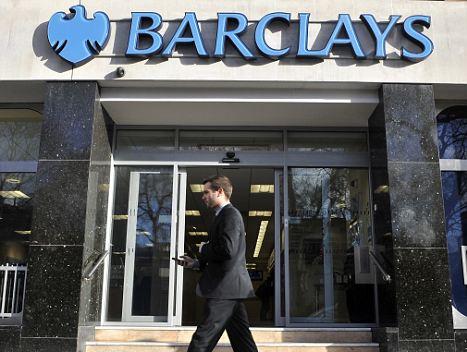- Apr 11, 2022
- pushpinder
- Forex Trading
- 0 Comments
Contents
In some cases , the IRS has laid out rules around how much an asset can depreciate, so guesswork or assessment is taken out of the picture. The debate occurs because this accounting rule requires companies to adjust the value of marketable securities to their market value. The intent of the standard is to help investors understand the value of these assets at a specific time, rather than just their historical purchase price. As initially interpreted by companies and their auditors, the typically lesser sale value was used as the market value rather than the cash flow value. Many large financial institutions recognized significant losses during 2007 and 2008 as a result of marking-down MBS asset prices to market value. The credit is provided by charging a rate of interest and requiring a certain amount of collateral, in a similar way that banks provide loans.
When these loans have been identified as bad debt, the lending company will need to mark down its assets to fair value through the use of a contra asset account such as the “allowance for bad debts.” Mark to market can present a more accurate figure for the current value of a company’s assets, based on what the company might receive in exchange for the asset under current market conditions. Derivatives are financial contracts whose value is based on an underlying asset. The most common type is a futures or forward contract, which is a contract to buy or sell an asset at a future date. These contracts are also commonly valued using mark-to-market accounting because their value will most likely fluctuate. Mark-to-market accounting has been criticized for creating an environment where companies will engage in high-risk behavior to get the most out of their assets before they are revalued, leading to further market instability.

In the investing world, the process of evaluating the market value of securities on a daily basis is crucial. When a company performs mark to market operations, it must not only follow the FASB and GAAP rules but must also keep its mark to market reporting up to date. The formal process for marking an asset to market is defined by the Financial Accounting Standards Board where proper guidelines are published for companies to follow. In other words, in unfavorable markets or in low liquidity conditions, a company may not realize the value that it considered when marking its asset to market . In many cases, the mark to market or MTM is contrasted with an asset’s historical value or book value.
By marking the securities’ current value, the brokerage firm could adequately evaluate whether or not the trader is meeting its margin account requirements. This is important as the brokerage firm must keep proper tab on traders using margin accounts to trade. Under the FASB guidelines, the notion of fair value is defined and the manner companies are required to measure the value of their asset is by adopting the generally accepted accounting principles .
Marked-to-market
Fair value, in theory, is equivalent to the current market price of an asset. According to SFAS 157, the fair value of an asset is “the price that would be received to sell an asset or paid to transfer a liability in an orderly transaction between market participants at the measurement date.” Long PositionLong position denotes buying of a stock, currency or commodity in the hope that the future price will get higher from the present price. The course of action suggests that the investor or the trader is expecting an upward movement of the stock from is prevailing levels. In that case, the trader taking a long position will collect the money equal to the security’s change in value from the trader holding the short position .
This method is based on a lot of assumptions — from cash flows to interest rates — so it’s really an educated guess. The price of the stocks is based on what buyers and sellers do each day with their stocks. Therefore, Marge knows that the only way to come up with the closest value of her stocks is to take that snapshot at the end of Debt/EBITDA Definition the day. Toby is an attorney on a mission to help investors and business owners keep and grow more. A founding partner of Anderson Business Advisors, Toby helped Anderson grow its practice from one of business and estate planning to a thriving tax practice and registered agent service with tens of thousands of clients nationwide.
While Musk owns 162 million shares, the bulk of these shares are ‘locked up’ and cannot be sold or pledged for five years. This was highlighted by the Great Financial Crisis of 2008 which resulted in instability in the financial system. If institutions are required to mark all https://1investing.in/ their assets to market, they may be required to sell assets when prices are falling, which causes prices to fall further. When assets are marked to market, volatility can cause a chain reaction throughout the financial system, which can sometimes become a vicious cycle.
Investors often act irrationally when they see the value of their portfolio decline. People are more likely to panic sell the assets that are priced every day, than illiquid assets like real estate, art or collectables. MTM valuation is an essential element of the trading process for margined instruments like derivatives, and allows brokers to manage their risk. Most of the alternative methods of valuing an asset are subjective and prone to bias. When subjective valuation methods are used, they can be manipulated to suit various parties.

In the event of a default, the loans must be qualified as bad debt or non-performing assets. It means that the company must mark down the value of the assets by creating an account called “bad debt allowance” or other provisions. In the latter method, however, the asset’s value is based on the amount that it may be exchanged for in the prevailing market conditions. However, the mark to market method may not always present the most accurate figure of the true value of an asset, especially during periods when the market is characterized by high volatility. If you are trading with leverage, it’s also important to know how positions will be marked to market each day so that you can make sure you are not taking on too much risk.
What is marked to market daily?
Like current assets and fixed assets are categorized as per the duration the company holds these assets. Banks and institutions can also become technically insolvent when market price trade at irrationally low prices. Mark-to-market losses are paper losses generated through an accounting entry rather than the actual sale of a security. A company that offers discounts to its customers in order to collect quickly on its accounts receivables will have to mark its AR to a lower value through the use of a contra asset account.

To overcome this, the financial world has adopted the mark to market methodology. The following guide focuses on how marking to market benefits retail and institutional derivatives traders. Mark-to-market losses are losses generated through an accounting entry rather than the actual sale of a security. Mark-to-market losses can occur when financial instruments held are valued at the current market value. If a security was purchased at a certain price and the market price later fell, the holder would have an unrealized loss, and marking the security down to the new market price would result in the mark-to-market loss. Mark-to-market accounting is part of the concept of fair value accounting, which attempts to give investors more transparent and relevant information.
What is LTP in stock trading?
Purchasers of distressed assets should buy undervalued securities, thus increasing prices, allowing other Companies to consequently mark up their similar holdings. Internal Revenue Code Section 475 contains the mark to market accounting method rule for taxation. Fair value accounting has been a part of Generally Accepted Accounting Principles in the United States since the early 1990s, and is now regarded as the “gold standard” in some circles.[which? When it comes to securities, the mark to market methodology requires using fair value instead of book value.
As mentioned, mark-to-market accounting provides a realistic financial picture, especially for businesses in the financial industry. In fact, some financial pundits believe the Savings and Loans Crisis of 1989 could have been avoided entirely if banks and lending institutions used the mark-to-market accounting method instead of historical cost accounting. Banks were listing the original price they paid for assets and only made changes on the books when those assets were sold. Incidentally, a taxpayer who scores the much-coveted trader tax status from the IRS can also enjoy other benefits at the end of the tax year, such as a wash sale, something that is normally prohibited for tax purposes. A wash sale involves selling marketable securities for intentional trading losses and then repurchasing them after filing taxes so that the trading losses can reduce the overall income of the taxpayer.
Level 1 assets are assets that have a reliable, transparent, fair market value, which are easily observable. Stocks, bonds, and funds containing a basket of securities would be included in Level 1 since the assets can easily have a mark-to-market mechanism for establishing its fair market value. MTM losses on positions will show up as unrealised profit in Kite until squared off. If the security is not traded for the particular day, the latest available closing price is considered for MTM.
This left them with more liabilities than assets, and because there was so little liquidity in the market they couldn’t close positions. The result was that most banks were no longer able to either lend or borrow, and liquidity dried up even more. But this isn’t always the case when it comes to small cap stocks with low liquidity. When assets or liabilities can be valued using MTM methods, it gives potential stakeholders a realistic opinion of their value.
- While it can be very lucrative, it can also pose significant risks as the losses are multiplied.
- The use of MTM may be the best of the available methods to value liquid assets.
- Mark to market is an alternative to historical cost accounting, which maintains an asset’s value at the original purchase cost.
- Now that we’ve looked at what mark to market means, let’s look at its definition.
In addition, in the securities markets, it’s very common for financial institutions and brokerage houses to record the current market value of a trader’s securities held in a long or short position. The practice of mark to market as an accounting practice first developed among traders on futures exchanges during the 20th century and the practice spread to major banks and corporations. After the first day, your mark to market profit or loss is calculated by multiplying the daily change in price by the multiplier. And, when you close the position, the MTM profit or loss is calculated by using the difference between the previous day’s closing price and the price at which the trade is closed — which is once again multiplied by the multiplier. Mark to market accounting is also known as fair value accounting or market value accounting.
Sample trade to understand MTM
The previous year’s loss is written off from the first available gain, and if there is an excess gain over and above the loss, it is recorded in the books as Gain on Securities. Accounting Journal EntriesAccounting Entry is a summary of all the business transactions in the accounting books, including the debit & credit entry. It has 3 major types, i.e., Transaction Entry, Adjusting Entry, & Closing Entry.
Example of Mark to Market in Futures Trading
When the value of an asset changes daily, another method needs to be used to calculate the value. Experienced business owners and those looking tobuy a businesswould do well to take a lesson from the Enron scandal and avoid using unethical accounting strategies to hide debt from creditors and investors. Speaking to a qualified tax advisor can really help a business leverage legal strategies for financial success, without running afoul of tax law . Suffice it to say, though mark-to-market accounting is an approved and legal method of accounting, it was one of the means that Enron used to hide its losses and appear in good financial health.
For the company to assess the asset’s actual market value, it can do an MTM to record the asset’s current value (that may be $25,000 today). Many executives at Enron were indicted for a variety of charges and some were later sentenced to prison. As a consequence of the scandal, new regulations and legislation were enacted to expand the accuracy of financial reporting for public companies. In addition to being the largest bankruptcy reorganization in American history at that time.
The quantum of loss is deducted from the client’s margin account balance, and the balance payment is made out. Marketable SecuritiesMarketable securities are liquid assets that can be converted into cash quickly and are classified as current assets on a company’s balance sheet. Commercial Paper, Treasury notes, and other money market instruments are included in it. Assets can be marked to market by using the last price at which the asset was traded. Mark to market is also an essential part of the process of trading and investing margin instruments like futures, and prevents small losses growing into losses that are disastrous for brokers and their clients. Futures contracts are leveraged instruments that allow a trader to hold a long or short position several times larger than the amount they initially commit to a trade.
It also does not consider the time value of money, so it often falls short of presenting the value of a company accurately. Returning to an example we used earlier, the replacement cost of a home as listed by an insurance company is the cost of replacing the home, meaning, rebuilding it on the already-owned land. This value is likely to be far less than the current market value the homeowners would obtain if they sold their property. That said, in this instance, that type of mark-to-market value does not provide an accurate picture of the homeowner’s true net worth.

